Remember when toys were simple, sometimes dangerous, and always fun? Before helicopter parenting and warning labels on everything, we grew up with playthings that would make today’s safety inspectors have a conniption fit. Those carefree days when we’d race home after school to play with toys that, in hindsight, probably should have come with a liability waiver. Let’s take a nostalgic trip down memory lane and revisit some beloved childhood favorites that would never make it past today’s safety regulations.
1. Metal Playgrounds with Concrete Foundations
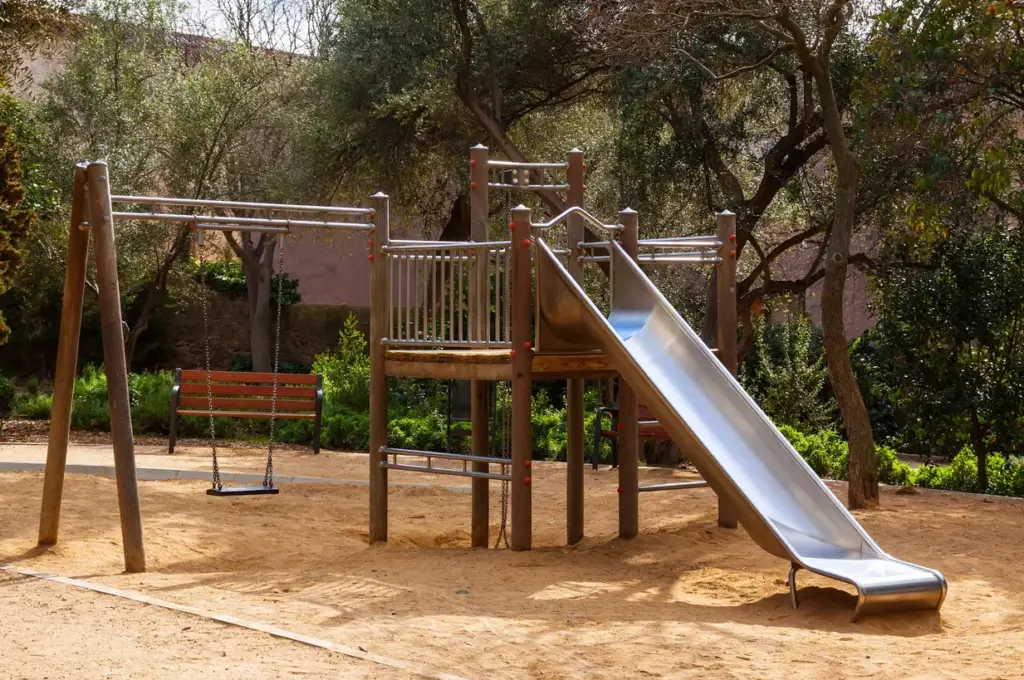
While not technically toys, the metal playground equipment of the 1960s and 70s deserves special mention for its remarkable disregard for child safety. Giant metal slides would reach scorching temperatures in summer sun, causing first-degree burns on the backs of unsuspecting legs, while their height and steep angles sent children hurtling toward concrete foundations at alarming speeds. The merry-go-rounds, essentially giant metal discs on ball bearings, could achieve dizzying speeds when pushed by older children, creating centrifugal forces that sent smaller kids flying into nearby swing sets. Bolder Play slides on down memory lane to explore the history of slides and how they came to be as scorching hot metal monstrosities in our playground.
The crowning achievement in playground danger was the giant metal rocket ships and dome climbers, often reaching 10-12 feet high with no safety netting below, just unforgiving concrete or packed dirt waiting for the inevitable fall. These playground fixtures have largely been replaced with plastic structures over rubber playground surfaces, maximum heights of 6 feet, and design features that prevent falls or entrapment. While safer, modern playgrounds lack the element of calculated risk that taught previous generations important lessons about physics, personal limitations, and the temporary nature of pain.
2. Clackers
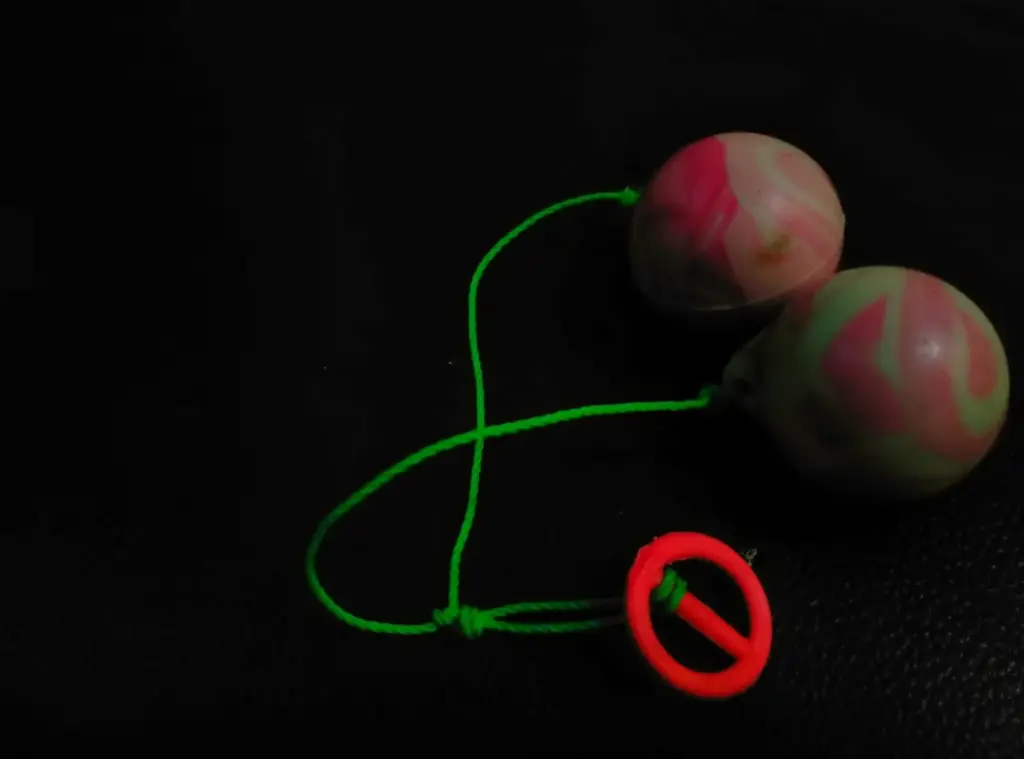
These deceptively simple toys consisted of two acrylic balls on a string that, when manipulated correctly, would “clack” together above and below the hand with satisfying force and noise. Popular in the late 1960s and early 1970s, Clackers (also known as Click-Clacks or Ker-Bangers) provided hours of rhythmic entertainment as children competed to see who could keep them clacking the longest. The distinctive sound could be heard throughout neighborhoods as kids mastered the wrist motion needed to keep the plastic spheres in perpetual motion. Quartz credits the clackers with inspiring a generation of parents that keep a particularly close eye on their children nearly constantly.
What made them dangerous was the acrylic material that could shatter at high speeds, sending sharp plastic shrapnel flying in all directions, often toward the face of the enthusiastic user. After numerous eye injuries and reports of plastic fragments embedding in skin, they were classified as “mechanical hazards” and removed from shelves in the early 1970s. Modern versions made with softer materials exist, but they lack the dangerous charm and satisfying “clack” that made the originals so addictively fun.
3. Chemistry Sets from the 1950s and 60s
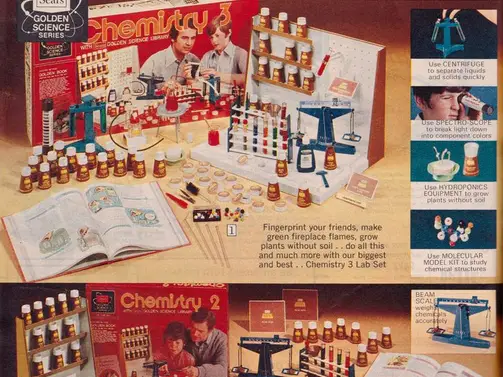
The chemistry sets of yesteryear weren’t just educational toys – they were genuine laboratories that contained real chemicals capable of producing impressive (and sometimes explosive) reactions. Gilbert Chemistry Sets and Porter Science kits from the 1950s and 60s included chemicals like potassium nitrate, ammonium nitrate, and even small amounts of uranium ore, encouraging young scientists to conduct experiments that could produce flames, gases, and color-changing reactions. These comprehensive sets came with glass test tubes, alcohol burners, and detailed manuals describing experiments that would make today’s parents nervously reach for the phone to call poison control. Smithsonian Magazine writes that while the chemistry set for kids experienced a decline in popularity, it has since gone on to enjoy renewed popularity.
The spirit of experimentation these sets fostered helped inspire generations of scientists, but modern safety standards have drastically changed what constitutes an acceptable home chemistry experience. Today’s chemistry sets contain diluted, non-toxic chemicals that produce tame reactions with minimal educational value compared to their predecessors. While safer, modern children miss out on the thrill of conducting genuine scientific experiments that could potentially singe eyebrows or create memorable smoke clouds in the family basement.
4. Lawn Darts (Jarts)
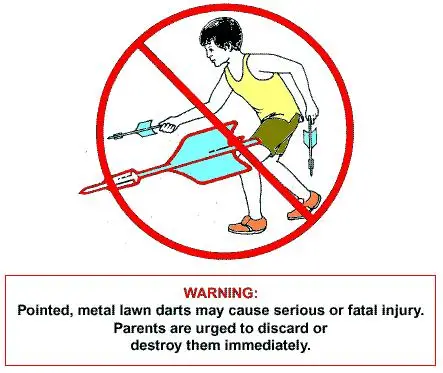
The original lawn darts, popularly known as Jarts, were essentially weaponized darts with weighted metal tips that players would toss toward plastic rings on the ground. Introduced in the 1960s, these heavy missiles of potential destruction became a staple of backyard family gatherings across America, with parents and children cheerfully hurling them skyward with abandon. The game’s premise was simple: score points by landing your darts in the target area, all while hoping no one accidentally wandered into the landing zone.
After numerous injuries and several tragic deaths, including the 1987 case of a seven-year-old girl killed by a stray dart, the Consumer Product Safety Commission banned their sale in 1988. Modern versions exist with blunt, weighted plastic tips that couldn’t pierce skin if they tried, a far cry from the original metal-tipped projectiles of our youth. The original Jarts stand as perhaps the most infamous example of a once-popular toy that would cause immediate panic in today’s safety-conscious marketplace.
5. Easy-Bake Ovens (Original Models)
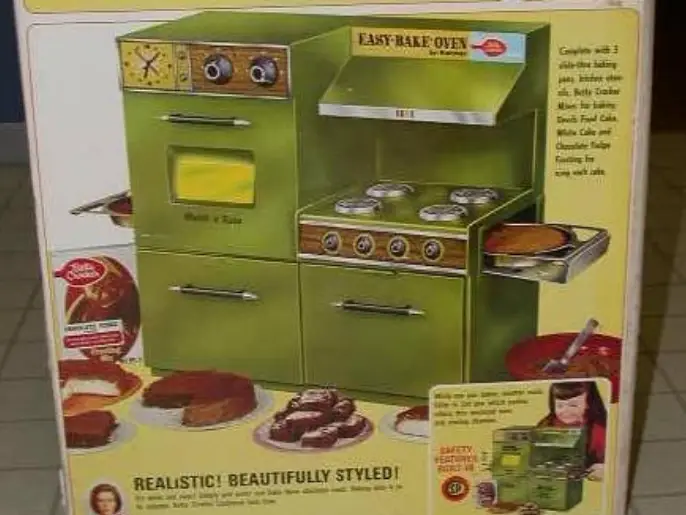
The original Easy-Bake Ovens introduced in 1963 weren’t powered by LED lights or low-wattage bulbs – they contained real heating elements that could reach temperatures of up to 350 degrees Fahrenheit inside their appealing turquoise or pale yellow exteriors. These miniature ovens plugged directly into standard wall outlets and used 100-watt incandescent light bulbs as heating elements, allowing children as young as eight to bake tiny cakes and cookies with genuine heat that could cause serious burns. Despite their inherent dangers, these beloved toys introduced generations of children to the joy of baking in a functioning, if miniaturized, oven.
By 2007, Hasbro was forced to recall one million units after dozens of children suffered serious burns from reaching into the oven’s chamber or touching its exterior during operation. Modern versions use LED technology and much lower heat, making them significantly safer but perhaps less exciting for young bakers eager to create real baked goods. The original models remain a nostalgic reminder of an era when toys could be genuinely functional rather than merely simulate adult activities.
6. Wood Burning Art Kits
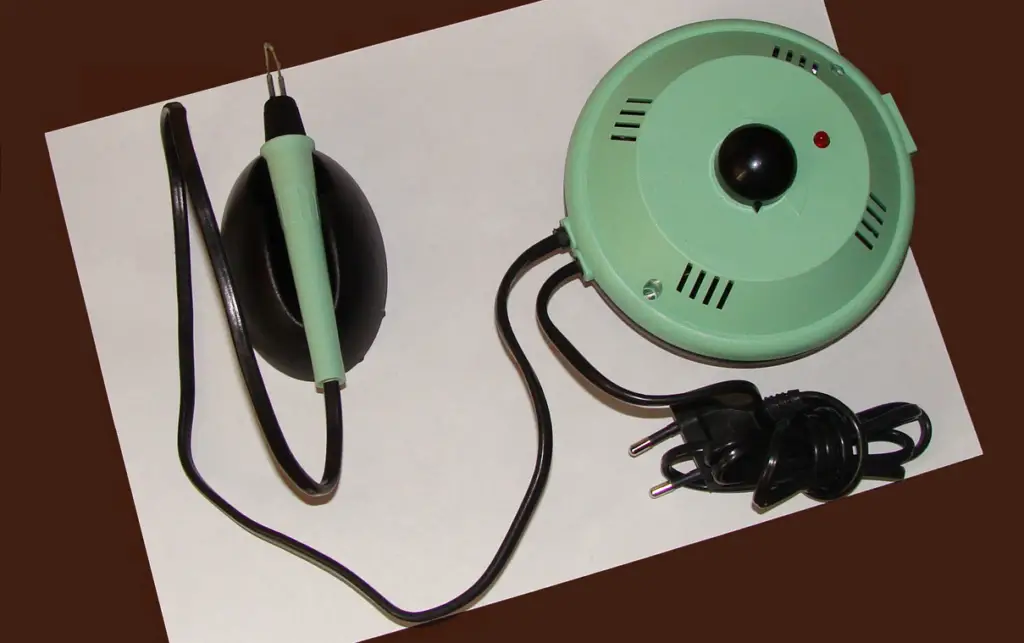
For the artistically inclined child of the 1950s through the 1970s, wood burning kits offered the thrilling combination of creativity and controlled danger. These sets featured an electric stylus that heated to several hundred degrees, allowing young artists to burn permanent designs into pieces of wood or leather, often filling the house with the distinctive smell of scorched materials. The original kits came with minimal safety features – perhaps a metal stand for the pen and warnings to avoid touching the glowing red tip – and were marketed to children as young as eight or nine years old.
Parents would casually gift these 950-degree fire pens to children, providing minimal supervision as youngsters plugged them directly into wall outlets and proceeded to create permanent burn art. The potential for serious burns, electrical shocks, and even household fires didn’t seem to concern parents or manufacturers, who trusted children with what was essentially a handheld branding iron. Today’s versions feature lower temperatures, automatic shut-offs, and are marketed to teenagers rather than elementary school children, reflecting our changed perception of acceptable risk in children’s crafting activities.
7. Creepy Crawlers “Thingmaker”
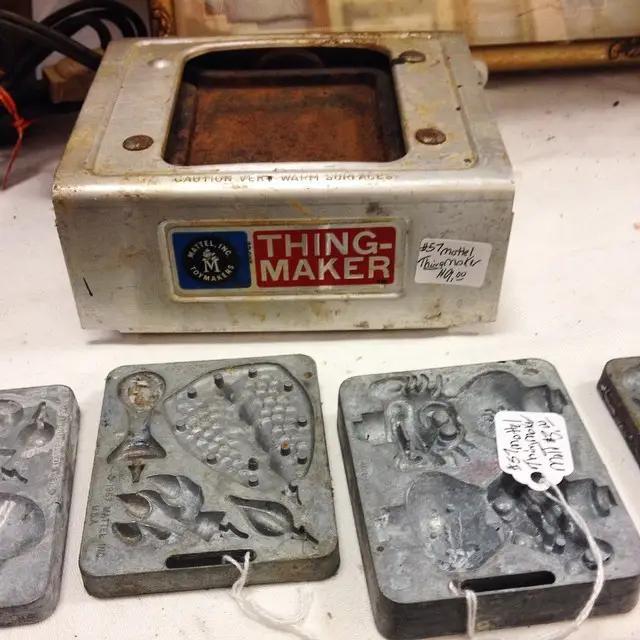
The original Creepy Crawlers set introduced in 1964 invited children to pour liquid “Plastigoop” into metal molds and then bake them in an open-faced electric hot plate called the “Thingmaker” that heated to 400 degrees Fahrenheit. The incredibly hot plate would transform the liquid plastic into rubbery bugs, snakes, and other creatures that children could collect and use to frighten siblings or unsuspecting adults. The smell of cooking plastic filled many childhood homes as eager young toy makers created armies of colorful creatures, often while unsupervised in bedrooms or basements.
Burns were common as impatient children attempted to remove the molds before cooling or accidentally touched the exposed heating element, which had minimal safety features and stayed hot long after being turned off. The original chemical composition of the Plastigoop included vinyl chloride, now understood to be highly toxic, which children would handle directly and breathe in as it cooked on the open hotplate. Modern versions use less dangerous chemicals and enclosed heating elements, but lack the visceral experience of cooking your own toys on what was essentially a miniature stovetop.
8. Slip ‘N Slide
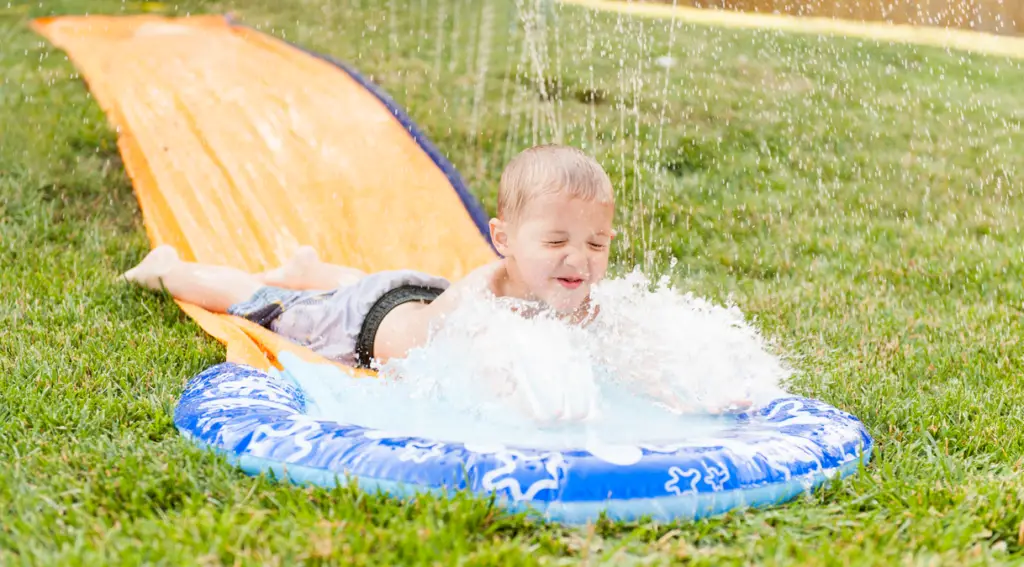
Introduced in 1961, the original Slip ‘N Slide was a simple yet effective concept: a 25-foot sheet of plastic runway that, when sprayed with water from a garden hose, transformed ordinary grass into a slippery speed course. Children would take running starts before diving headfirst onto the plasticized track, hydroplaning across yards at surprisingly high velocities toward whatever obstacle might lie at the end of the runway. The flimsy nature of the plastic meant it often tore away from its stakes, revealing hidden rocks, sticks, or other backyard hazards just as children reached maximum velocity.
Without built-in padding or specified landing zones, children rocketed across these wet strips using their bodies as human projectiles, often resulting in what we affectionately called “grass burns” but were actually painful skin abrasions requiring first aid. In 1993, after adults suffering paralysis from using the product sued, Wham-O added warnings that the slide was not for people over 12 years of age or taller than 5 feet – a belated acknowledgment that sending humans hurtling across the ground at high speeds might require safety considerations. Modern water slides incorporate inflatable bumpers, landing pools, and thicker materials, suggesting we’ve gained wisdom but perhaps lost some of the glorious recklessness of summers past.
9. Trampolines (Pre-Safety Era)

Before safety nets and padded springs became standard, backyard trampolines were essentially injury factories disguised as fun, featuring exposed metal springs and a complete absence of safety enclosures. These bouncing platforms of the 1970s and 80s created a perfect storm of danger: multiple children jumping simultaneously, attempting increasingly complex aerial stunts, with nothing to prevent them from bouncing off the edge onto hard ground below. The neighborhood trampoline became the unofficial test of childhood courage, with “double bouncing” smaller kids and games of “crack the egg” teaching valuable lessons about physics, trust, and the limitations of pediatric orthopedic medicine.
The classic “This is why we can’t have nice things” parental lecture often followed trampoline incidents, as emergency room visits for sprains, fractures, and concussions became so common that doctors coined the term “trampoline fracture” to describe the specific injury pattern. Insurance companies eventually began refusing coverage for homes with trampolines, leading to the safety features now considered standard: full enclosure nets, spring covers, and strict instructions limiting jumpers to one at a time – rules that are universally acknowledged and almost universally ignored. While modern trampolines are significantly safer by design, they require so many precautions that they serve as bouncing monuments to our evolving risk tolerance.
10. Sky Dancers
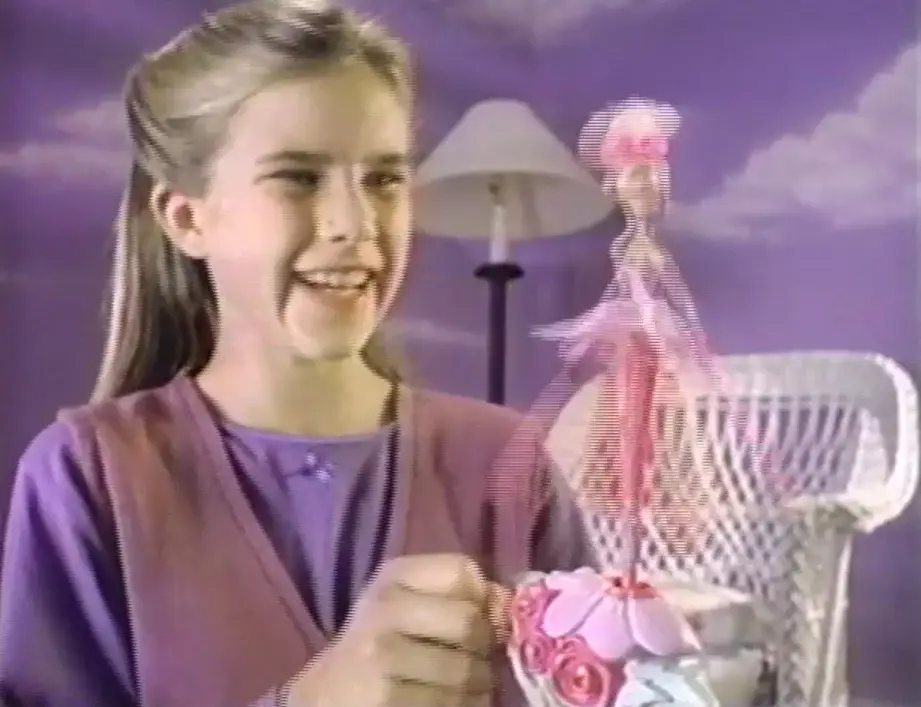
The mid-1990s brought us Sky Dancers, the foam-winged fairy dolls that transformed into unpredictable whirling projectiles when launched from their bases. Children would pull a string to send these dolls spinning skyward on plastic wings, ostensibly to “dance” gracefully through the air before gently returning to earth. In reality, these lightweight toys became high-speed aerial hazards, spinning with surprising force in entirely random directions – often toward the faces of the children operating them or unsuspecting bystanders.
The problem wasn’t just their unpredictable flight paths but the surprising hardness of their plastic wings and heads, which could cause significant impact injuries when they inevitably collided with human targets. After numerous reports of eye injuries, scratched corneas, broken teeth, facial lacerations, and even temporary blindness, Galoob recalled about 8.9 million Sky Dancers in 2000. Modern flying toys incorporate much softer materials and lower launch velocities, reflecting our diminished tolerance for playthings that might inadvertently become weapons.
The toys of yesteryear taught us resilience, caution, and the natural consequences of poor decisions – valuable life lessons that came with the occasional scar or memorable trip to the emergency room. While today’s safer alternatives protect children from physical harm, one can’t help but wonder if something intangible has been lost in our quest for perfectly padded, thoroughly tested playthings. Perhaps the greatest gift those dangerous old toys gave us wasn’t just fun, but the confidence that comes from managing risk and surviving the small dangers of childhood relatively unscathed – plus some great stories to share with our safety-conscious grandchildren who will never believe we were allowed to play with such things.



